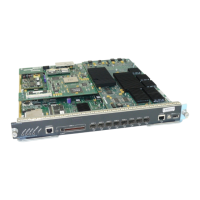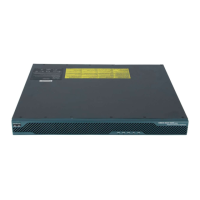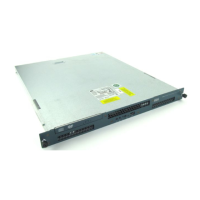12 OL-5051-01
Table 1 Buttons and other components, as illustrated in Figure 2
1
Phone screen Allows you to view call status and feature menus, and activate items. See the
“Phone Screen Features” section on page 14 for details.
2
Minimize and
close icons
Allows you to hide the Cisco IP Communicator interface or quit the
application. See the “Understanding Feature Availability” section on
page 18.
3
Line buttons and
speed dial buttons
Each button opens/closes a line or speed dials a number. (Ctrl + numbers 1
- 8 are keyboard shortcuts). Line buttons indicate line status as follows:
•Green, steady—Active call on this line (off-hook)
•Green, blinking—Call on hold on this line
•Orange, blinking—Incoming call ringing on this line
•Red—Shared line, currently in use
•No color—No call activity on this line (on hook)
You can convert extra line buttons into speed-dial buttons. See the “Setting
Up Speed Dial Buttons” section on page 33.
4
Messages button Typically auto-dials your voice message service (varies by service).
(Ctrl + M is the keyboard shortcut.) For more information, see item 16 in
this table and the “Using Voice Messaging, Call Logs, and Directories”
section on page 51.
5
Directories button Opens/closes the Directories menu. Use it to view and dial from call logs and
a corporate directory. (Ctrl + D is the keyboard shortcut.) Alternately, you
can use the Quick Search feature (Alt + K) to search directories. See “Using
Voice Messaging, Call Logs, and Directories” section on page 51.
6
Help button Activates the Help menu. (Ctrl + I is the keyboard shortcut.) See the “Using
Online Help” section on page 18.
7
Settings button Opens/closes the Settings menu. Use it to control phone screen appearance
and ring sounds. (Ctrl + S is the keyboard shortcut.) See the “Customizing
Cisco IP Communicator Settings” section on page 31.
8
Services Button Opens/closes the Services menu. (Ctrl + V is the keyboard shortcut.) See the
“Accessing Your User Options Web Pages” section on page 55.
9
Volume button Controls audio mode volume and other settings. (Page up/Page down are
keyboard shortcuts). See “Customizing Cisco IP Communicator Settings”
section on page 31.
10
Speaker button Toggles speakerphone mode on or off. (Ctrl + P is the keyboard shortcut.)
See the “Using Headsets and Other Audio Devices” section on page 46.
